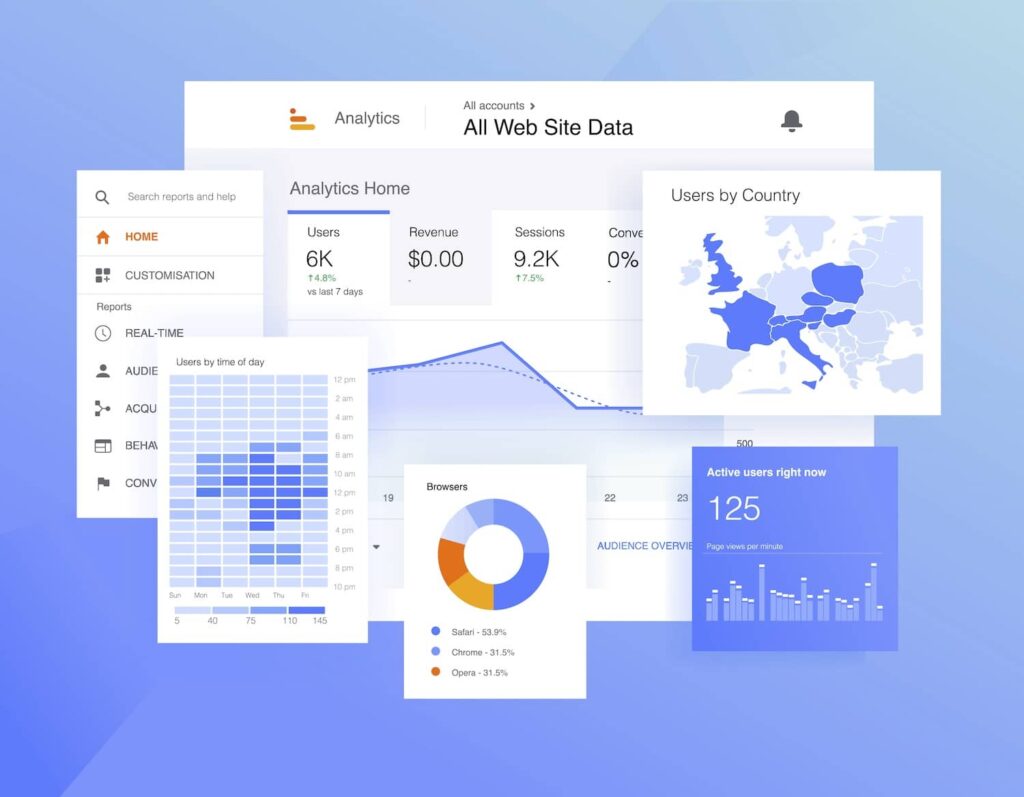Harnessing the Power of Additional Dimension in Google Analytics to Fine-tune Your Marketing Method and Drive Outcomes
In the realm of electronic advertising and marketing, the capacity to fine-tune methods and attain tangible results is paramount for companies making every effort to remain competitive in today's landscape. Leveraging the power of secondary measurements within Google Analytics opens a realm of opportunities for online marketers seeking to get deeper insights right into customer actions and tailor their projects with accuracy. By unearthing covert patterns and refining target market division, businesses can craft targeted strategies that reverberate with their consumers on a profound level. The possible to gauge campaign efficiency with a granular lens additionally stresses the importance of utilizing this device to drive success.
Comprehending Additional Dimensions
When assessing information in Google Analytics, comprehending additional dimensions is crucial for obtaining deeper insights right into customer habits and site efficiency. Main dimensions provide basic details such as the number of sessions or customers, but additional dimensions offer an even more comprehensive sight by enabling customers to section and analyze information even more. By including a secondary measurement, marketing professionals can refine their evaluation and uncover useful patterns that may have otherwise gone unnoticed.
Additional measurements in Google Analytics can be related to numerous metrics such as traffic resources, user demographics, and actions circulation. For instance, by integrating the key measurement of 'touchdown pages' with the secondary dimension of 'device classification,' marketing professionals can figure out which devices are driving traffic to particular landing pages. This info can aid optimize website design and material for much better customer experience across different devices
Studying User Behavior Patterns
To properly understand individual actions patterns, a detailed analysis of data within Google Analytics is essential. By delving into individual behavior patterns, online marketers can acquire valuable insights into just how visitors engage with their web site, which web pages are most engaging, and where possible traffic jams or drop-off factors may exist in the conversion channel. Google Analytics provides a variety of devices to analyze user behavior, such as actions circulation records, event tracking, and goal funnels.
Behavior circulation records give an aesthetic depiction of how customers navigate with the website, showing one of the most common courses customers take along with where they hand over. Occasion tracking permits marketing experts to keep track of details communications on the site, such as button clicks or video clip views, giving a much deeper understanding of user engagement. Objective funnels track the actions users take in the direction of completing a particular goal, highlighting areas for enhancement in the conversion process.
Enhancing Audience Division
Upon evaluating customer behavior patterns, marketers can better enhance their approaches by improving target market segmentation techniques in Google Analytics. Target market division permits the classification of site visitors into particular groups based upon various characteristics such as demographics, habits, and rate of interests. By using Google Analytics' secondary measurements, marketing professionals can improve these sections also further to gain deeper understandings right into their target market's actions and choices.
Enhancing target market segmentation makes it possible for marketing experts to create even more targeted and individualized advertising and marketing campaigns. By determining distinct user groups, marketing experts can tailor their messaging, web content, and provides to far better resonate with each sector's one-of-a-kind characteristics and needs. This level of customization can considerably enhance interaction, conversion rates, and overall advertising and marketing performance.
In addition, through improved audience segmentation, marketers can much better recognize the client trip and maximize touchpoints along the path to conversion. By evaluating how different segments connect with the website and advertising networks, marketers can recognize chances to enhance customer experience, address discomfort factors, and inevitably drive more conversions. On the whole, refining audience division in Google Analytics is a powerful approach for making the most of advertising performance and driving sustainable business development.
Tailoring Advertising Campaigns
Marketing professionals can maximize their advertising and marketing campaigns by customizing material and messaging to suit the special features and requirements of certain audience sectors. Tailoring advertising and marketing campaigns includes producing tailored experiences that reverberate with various teams of customers. By leveraging insights from secondary measurements in Google Analytics, marketing professionals can gain a much deeper understanding of their audience's actions, preferences, and demographics. This data allows for the creation of targeted projects that speak directly to the passions and pain points of particular segments, raising the likelihood of engagement and conversion.
With the analysis of secondary dimensions such as traffic resources, tools used, or geographical area, marketing experts can fine-tune their messaging to be much more pertinent and impactful. An ecommerce firm might find through Google Analytics that visitors from social media networks have a higher conversion price than those from natural search. Equipped with this expertise, the company can readjust its marketing technique to focus more on social media sites systems to drive far better outcomes. By customizing advertising campaigns based on insights from additional measurements, organizations can optimize the efficiency of their efforts and inevitably drive far better ROI.
Determining Campaign Performance

One essential facet of determining project effectiveness is tracking conversions. By establishing up objectives in Google Analytics, organizations can check certain activities taken by individuals as an outcome of the project, such as making an acquisition or authorizing up for an e-newsletter. Recognizing the conversion rate and the conversion path can give beneficial understandings right into the effectiveness of different marketing channels and messages.
Moreover, evaluating metrics such as click-through prices, bounce rates, and session period can aid marketers assess individual involvement and the influence of the campaign on web site web traffic. By incorporating key metrics with additional measurements in Google Analytics, businesses can fine-tune their advertising and marketing web link strategies, enhance campaign performance, and drive much better outcomes.
Verdict
In final thought, taking advantage of the power of second dimensions in Google Analytics can give valuable understandings into customer habits patterns, improve audience division, tailor advertising projects, and step campaign performance. By using this feature effectively, organizations can improve their marketing approaches and drive much better outcomes. It is crucial for marketing professionals to leverage the data available through additional dimensions to make enlightened decisions and enhance their advocate maximum impact.
